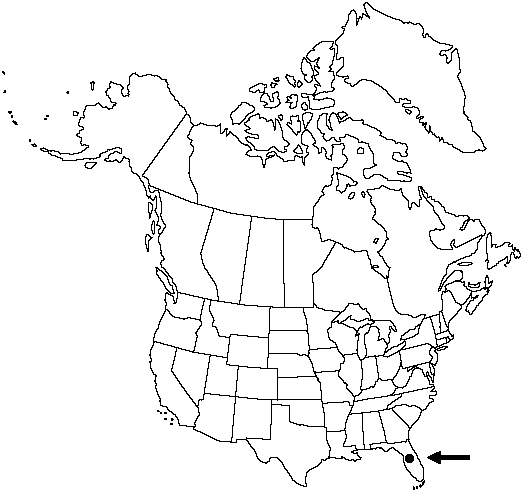Difference between revisions of "Pityrogramma calomelanos var. calomelanos"
imported>Volume Importer |
imported>Volume Importer |
||
| Line 46: | Line 46: | ||
|publication year= | |publication year= | ||
|special status=Introduced | |special status=Introduced | ||
| − | |source xml=https:// | + | |source xml=https://bitbucket.org/aafc-mbb/fna-data-curation/src/2e0870ddd59836b60bcf96646a41e87ea5a5943a/coarse_grained_fna_xml/V2/V2_287.xml |
|genus=Pityrogramma | |genus=Pityrogramma | ||
|species=Pityrogramma calomelanos | |species=Pityrogramma calomelanos | ||
Latest revision as of 20:22, 5 November 2020
Leaves 25–120 cm. Petiole black, dull, glabrous or sparsely scaly proximally. Blade elongate-triangular to ovate-lanceolate, 2-pinnate-pinnatifid, sometimes 3-pinnate proximally, densely white-farinose abaxially. Pinnae narrowly triangular, pinnately lobed or divided, flat surfaces in plane of blade. Pinnules short-stalked or sessile, lanceolate, margins serrate to lobed near base. Spores with perispore reticulate and with equatorial flange.
Habitat: Ditches in forested areas
Elevation: 0–20 m
Distribution

Introduced; Fla., Mexico, West Indies in the Antilles, Central America, South America, widely naturalized in tropical Africa.
Discussion
Pityrogramma calomelanos var. calomelanos is commonly cultivated in greenhouses. In Florida, it is known from a small number of sites in Hillsborough and Polk counties, where it possibly escaped from cultivation. Pityrogramma calomelanos var. austroamericana (Domin) Farwell (Costa Rica to Brazil) is characterized by yellow farina; P. calomelanos var. ochracea (C. Presl) R. M. Tryon (Honduras to Bolivia) possesses scattered trichomes instead of farinose indument.
Selected References
None.